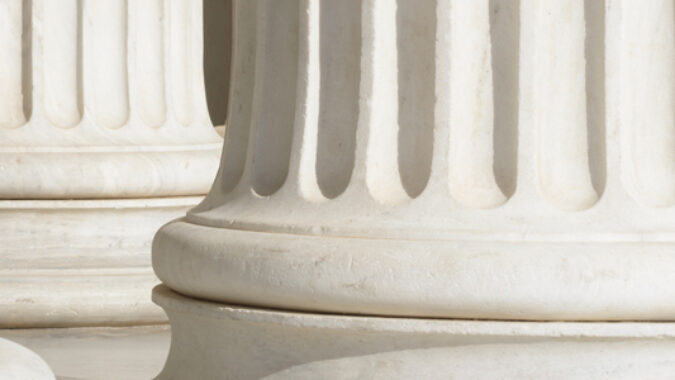On behalf of our member companies that provide more than 1 million jobs in the state and make the New Jersey Business & Industry Association the largest statewide business association in the country, we are submitting the following comments on the proposed New Rules: N.J.A.C. 14:8-6.6 and 6.7 Proposed Amendments: N.J.A.C. 14:8-6.1 and 6.2.
The commercial and industrial ratepayer consumes 37 percent of the electricity in New Jersey and has a vested interest in the development of energy policy, the implications on competitiveness and ratepayer impact. New Jersey has the highest electric retail rates in our grid and the 10th highest in the country. Currently 24 percent of the electric bill is from government imposed taxes and fees. NJBIA has been involved in this discussion for many years and seeks to balance the environmental and the economic impacts to ratepayers. NJBIA applauds the efforts of the Governor and legislative leaders for their vision on this topic and for continuing the wind power dialogue, but we think changes are warranted.
Recent media reports question the viability of New Jersey wind projects and the cost that will be ultimately paid by the consumer. The State of New Jersey must consider the cost benefit when making new energy sources part of the portfolio. These new sources must help balance the portfolio and help alleviate the high costs of energy to the rate payer.
By analyzing projects in other states that are also considering offshore wind, New Jersey can seek benchmarks about costs and job estimates to help determine how the state should enter this new unknown territory. In addition, that state can also learn how to protect its ratepayers.
Massachusetts struggled for several years to implement an offshore wind project. The project initially failed, in part, due to concerns regarding projections which revealed that consumers would pay approximately $1.4 billion above market rates for half of the electricity generated by the Cape Wind project. They have since rebid their project under a competitive bidding process and are expected to announce a winner(s) in the coming weeks.
In Rhode Island, where Deepwater Wind’s Block Island Wind Farm recently became the nation’s first offshore wind farm, analysts have projected that ratepayers could face an additional $473.4 million in energy costs over the project’s 20-year lifetime. Some of these changes have already begun to affect consumers, and in January, the Newport City Council passed a resolution asking the state’s Public Utilities Commission to investigate the cause of recent energy price increases.
Offshore wind is a laudable goal and a potential component to New Jersey’s future energy portfolio. NJBIA not only recognizes that a stable electric grid receives power from a diverse mix of sources, but also that businesses rely on “load power—generation” (which is reliable over 70 percent of the time). Although the state once determined which generation sources fed into the generation mix, since deregulation, PJM has taken over the role. However, a generator of power can come and go as economic conditions dictate. Currently, New Jersey does not produce enough power on a daily basis to satisfy the needs of the state; therefore, New Jersey imports approximately 10 percent of the power needed. This shortfall costs New Jersey ratepayers money as we must pay a penalty for capacity charges imposed by PJM.
On the other hand, the state has encouraged the development of renewables through the Renewable Portfolio Standard (RPS) which sets purchase goals for electric utilities. A policy decision was made that ratepayers should purchase more expensive, less reliable power sources because they add to the state’s portfolio and are sources of clean generation. The purchasing of ORECs would increase the cost to ratepayers. While exact costs are unknown, there will be substantial increases in rates, followed by an estimated 20-year requirement to purchase the offshore wind or ORECs.
Instead, our grid will receive the power, where it may be sold into PJM or sold elsewhere. In addition, PJM will have to reserve back-up generation in case the wind is intermittent. At best estimates, there will be a 35 percent reliability factor compared to an approximate 90 percent reliability of nuclear power. Our ratepayers already pay PJM capacity and reliability charges because we don’t have enough power produced from steady reliable sources. Adding windmills may increase our potential capacity, but if they aren’t reliable, we still will need traditional sources.
Massachusetts has begun taking steps to protect ratepayers by partially basing competitive bid selection on an evaluation of both the direct and indirect impacts to ratepayers of each proposal. New Jersey ratepayers would be best served if the State built off of Massachusetts’ example, and ensured a fair and open competitive bidding process for any proposed projects. To further ensure that ratepayers will not only evade harm, but benefit from these changes, a net economic benefit test should be required for each new statute. These measures create transparency and shield New Jersey ratepayers from disadvantageous regulation.
It is impossible to know what our energy needs or landscape will look like in twenty years, let alone 30 years’ time. We request you consider the following matters related to this long-term policy’s:
- What is the cost benefit analysis for ratepayers to subsidize this type of power?
- How much will this new energy source cost businesses in increased rates?
- How many potential jobs will be lost as energy prices continue to rise?
- Are there other alternatives that could meet our policy goals while protecting ratepayers?
NJBIA is ready to work with you to develop an economically sound offshore wind policy.


